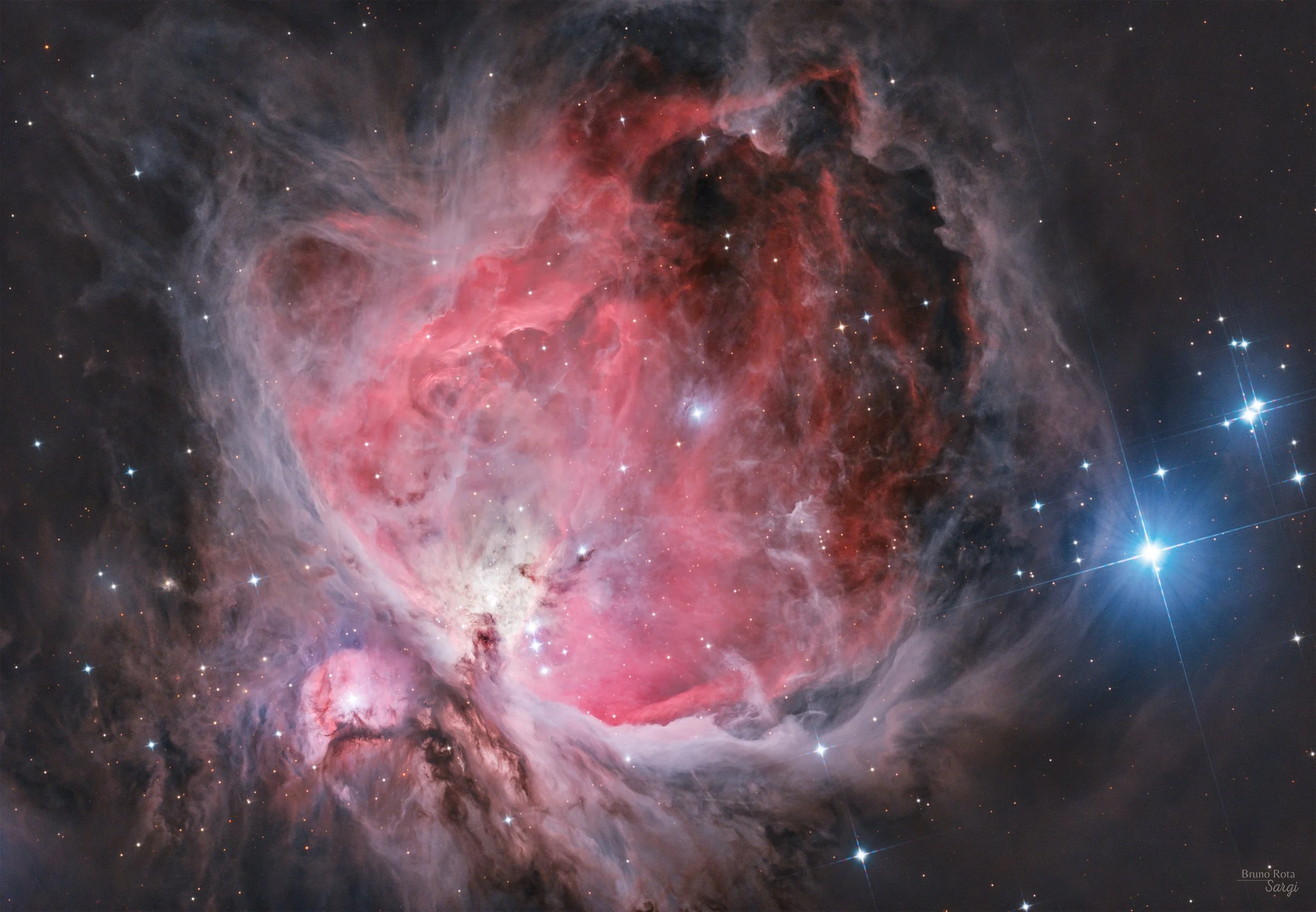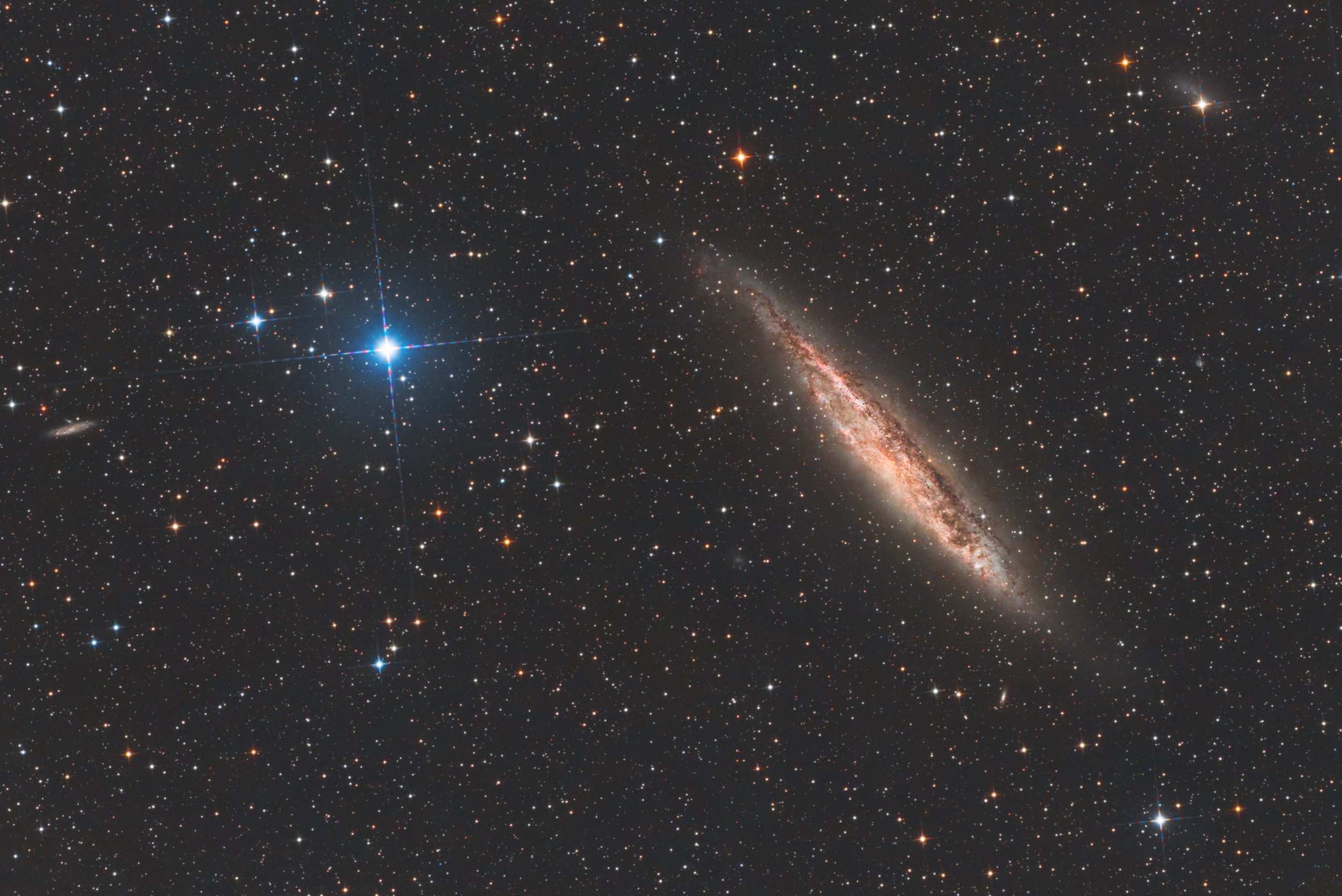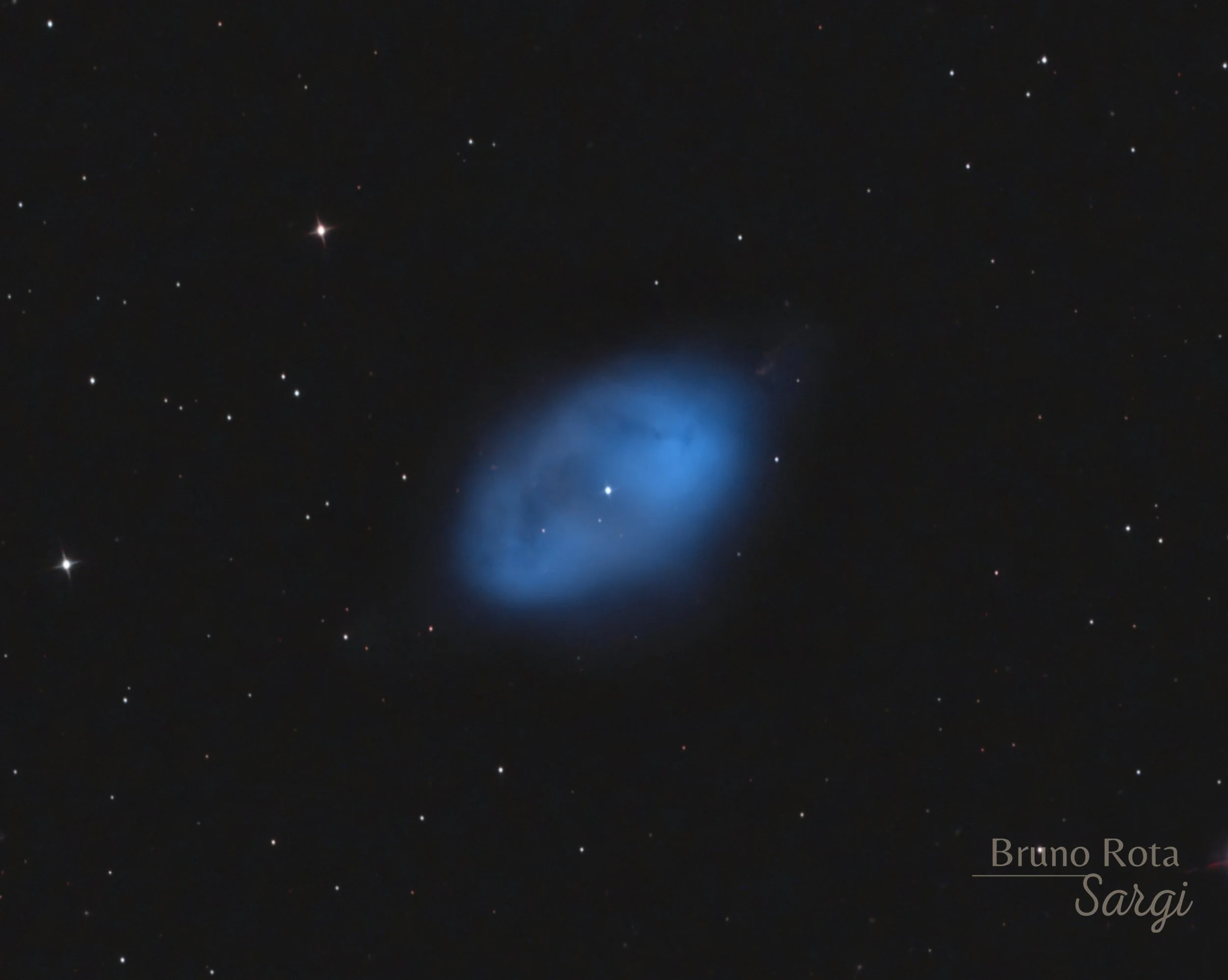
AAPOD2 Image Archives
NGC 4945-Barred Spiral Galaxy in Centaurus
NGC 4945 is a striking barred spiral galaxy located approximately 13 million light-years away in the constellation Centaurus. It is one of the brightest galaxies in the Centaurus group and is notable for its prominent bar structure and extensive, well-defined spiral arms. The galaxy's edge-on orientation provides a spectacular view of its elongated shape and central bulge.
NGC 4945 is also of significant interest to astronomers because of its active galactic nucleus (AGN), which harbors a supermassive black hole. This black hole is a source of intense X-ray emissions, making NGC 4945 one of the brightest X-ray galaxies in the sky. The presence of the AGN suggests high levels of activity and energetic processes occurring in the galaxy's core, offering valuable opportunities for studying the dynamics of black holes and their influence on their host galaxies.
The Southern Pinwheel Galaxy (M83)
The Southern Pinwheel Galaxy, also known as Messier 83 or M83, is a striking barred spiral galaxy located in the constellation Hydra. Situated approximately 15 million light-years away from Earth, M83 is one of the closest and brightest spiral galaxies visible from the Southern Hemisphere. Its distinctive spiral arms, adorned with bright clusters of young stars and nebulae, make it a captivating subject for astronomers and astrophotographers alike.
M83 is a hotbed of stellar activity, with ongoing star formation occurring within its spiral arms. It is home to numerous star clusters, nebulae, and regions of intense starbirth, indicating a vigorous cycle of stellar birth and death. Studying M83 provides astronomers with valuable insights into the processes driving galaxy evolution and the formation of stars. Additionally, M83 has been the site of several supernova explosions, further adding to its allure for astronomers seeking to understand the life cycles of stars and galaxies.
NGC 3293
NGC 3293, nestled within the sprawling expanse of the Carina constellation, stands as a stellar jewel in the cosmic tapestry, captivating astronomers with its dazzling brilliance and celestial splendor. This open star cluster, adorned with a myriad of luminous stars, offers a glimpse into the dynamic processes of stellar evolution and interaction.
Located approximately 8000 light-years away from Earth, NGC 3293 serves as a stellar nursery, birthing new stars and shaping the surrounding interstellar environment. Its diverse population of stars, ranging from massive luminaries to delicate stellar companions, paints a vibrant portrait of the rich diversity of stellar phenomena.
Thor's Helmet Nebula (NGC 2359)
Thor's Helmet Nebula, also known as NGC 2359, stands as a cosmic marvel in the constellation Canis Major, approximately 15,000 light-years away from Earth. Named for its striking resemblance to the legendary headgear of the Norse god Thor, this celestial spectacle captivates astronomers and stargazers alike with its intricate structure and vibrant hues.
At the heart of Thor's Helmet Nebula lies a massive Wolf-Rayet star, a rare and luminous type of star nearing the end of its life cycle. This stellar powerhouse expels stellar winds with tremendous force, sculpting the surrounding nebula into intricate filaments and shockwaves. The result is a breathtaking display of cosmic artistry, with delicate tendrils of gas and dust illuminated by the intense radiation of the central star.
Thor's Helmet Nebula offers astronomers a unique opportunity to study the complex interplay between massive stars and their surrounding interstellar medium. Through meticulous observation and analysis, scientists seek to unravel the mysteries of stellar evolution and the dynamics of galactic ecosystems. As Thor's Helmet Nebula continues to inspire wonder and fascination, it serves as a reminder of the boundless beauty and grandeur of the universe, inviting us to explore its depths and unlock its secrets.
Robin's Egg Nebula (NGC 1360)
NGC 1360, positioned in the constellation Fornax, unfolds as a planetary nebula, offering a unique astronomical insight into the final stages of stellar evolution. Located approximately 2,000 light-years away, this celestial object showcases a symmetrical structure, characterized by the luminous emission of ionized gases. The central star, concealed within the nebula's brilliance, represents a stellar remnant undergoing a transformative phase, shedding its outer layers into the interstellar medium.
The Dolphin Nebula (SH2-308)
The Dolphin Nebula, also known as Sh2-308, is an emission nebula situated in the constellation Cassiopeia. This striking nebula gets its name from its appearance, as the arrangement of gas and dust creates the visual impression of a dolphin leaping through space.
Sh2-308 is illuminated by the bright, massive star HD 313571, which is at the heart of the nebula. The radiation and stellar winds from this central star interact with the surrounding interstellar material, causing it to glow in various colors. The nebula's intricate structures, shaped by the powerful forces at play, make it a captivating target for both visual observation and astrophotography.
Studying the Dolphin Nebula provides astronomers with insights into the processes of massive star formation, the dynamics of ionized gas in space, and the interactions between stars and their cosmic surroundings. As an aesthetically pleasing celestial object, the Dolphin Nebula serves as a reminder of the beauty and complexity inherent in the vast reaches of our Milky Way galaxy.








